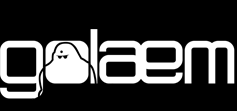Character Prerequisites
As of August 5th, 2025, Golaem will no longer provide direct support.
All support for Autodesk Golaem will now be handled exclusively through Autodesk support channels and this website will be deactivated soon.
Please bookmark the Autodesk Golaem Support section for any future support needs related to Autodesk Golaem packages.
Simulation Cache only stores positions, orientations, scales & postures of each Entity per frame. To be able to apply these data and thus render a deformed Entity geometry, its meshes and skeleton are stored in an FBX or GCG geometry file. Then, when a render is launched, the cached posture is applied to the geometry skeleton and the Golaem engine automatically computes the resulting deformed geometry according to skinning weights, constraints, deformers... See the Rendering Workflow for more information.
Thus, all the mechanisms used by a Maya character to deform its geometry according to its skeleton, must be exportable in an FBX or GCG file.
As FBX is Autodesk's main interchange file format, it supports most of the features of Maya. This includes skinning, blendshapes, parenting constraints, most deformers and a lot more. GCG File may only offer a subpart of FBX features, yet the most commonly used. The main differences between the two file formats is described in the following page and the limitations of the GCG file can be found here. Finally, as custom Maya deformers (internal Muscle system for example) will not be supported by FBX and GCG, they are neither supported by Golaem Crowd.
As shaders are not involved in the meshes deformation process, they are not concerned by the FBX/GCG limitations. The way shaders are included in the render process is detailed in the Rendering Workflow.




